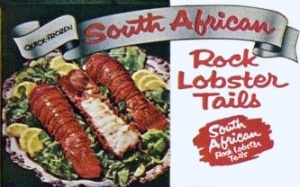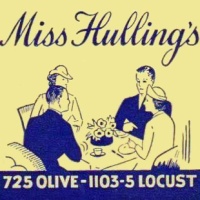 Throughout the 20th century the number of mobility-impaired Americans grew – due to medical advances, lengthening lifespans, polio epidemics, wars, and rising rates of automobile accidents. In the late 1950s and early 1960s the problem of physical barriers confronting those using wheelchairs, braces, canes, and walkers, began to get attention, largely as a result of activism by the disabled.
Throughout the 20th century the number of mobility-impaired Americans grew – due to medical advances, lengthening lifespans, polio epidemics, wars, and rising rates of automobile accidents. In the late 1950s and early 1960s the problem of physical barriers confronting those using wheelchairs, braces, canes, and walkers, began to get attention, largely as a result of activism by the disabled.
 At first the focus was on public buildings, but it soon expanded to include commercial sites such as restaurants. One of the early efforts to ease a path was the publication of a 1961 Detroit guide book that devoted several pages to describing features of two dozen popular restaurants that were at least minimally accessible. For instance The Village Manor in suburban Grosse Pointe had a street-level front entrance and a ramp in back as well as main floor restrooms outfitted with grab bars. But several of the restaurants listed had steps at entrances, narrow doorways, restrooms too small to maneuver a wheelchair, and tables too low for wheelchair seating.
At first the focus was on public buildings, but it soon expanded to include commercial sites such as restaurants. One of the early efforts to ease a path was the publication of a 1961 Detroit guide book that devoted several pages to describing features of two dozen popular restaurants that were at least minimally accessible. For instance The Village Manor in suburban Grosse Pointe had a street-level front entrance and a ramp in back as well as main floor restrooms outfitted with grab bars. But several of the restaurants listed had steps at entrances, narrow doorways, restrooms too small to maneuver a wheelchair, and tables too low for wheelchair seating.
In 1962 the National Society for Crippled Children and Adults (NSCCA, an organization that had added “Adults” to its name during WWII) joined with the President’s Committee on Employment of the Handicapped (established in 1947) to launch a nationwide movement to change architectural standards and building codes so as to remove barriers affecting people with mobility limitations. This marked a new attitude acknowledging that handicapped people wanted to “do more things and go more places” but were blocked by the built environment. It was becoming apparent, reported one newspaper, that those “who were no longer ‘shut-ins’ were ‘shut-outs.’”
In 1963 the NSCCA began sponsoring surveys of public and private buildings which included restaurants. In various cities local volunteers equipped with measuring tapes compiled records of buildings concerning the width of doorways, number of steps, presence of ramps and elevators, and placement and design of restroom facilities. Meanwhile, in New Jersey the Garden State Parkway altered its restaurants and restrooms for disabled travelers.
Overall, though, there was very little action. The surveys showed that accessibility in the United States – not only in restaurants, but in schools, court houses, hospitals, churches, and all kinds of businesses – was rare. A survey of Oklahoma in 1968 revealed that only 32 of the first 2,144 public facilities checked were fully accessible to anyone operating their own wheelchair, while 60% were entirely inaccessible. In Oklahoma City, the state’s capitol, only one of the 20 restaurants surveyed at that point could accommodate a wheelchair user.
1968 was the year when official recognition of the problems presented by architectural barriers was achieved with the passage of a federal law that decreed that any building constructed even partly with federal funds had to be barrier-free. Although restaurants remained unaffected by the law, it was significant for demonstrating a growing recognition that accessibility problems arose from the environment as much as from the disabilities of individuals. It would, however, take another 22 years, with passage of the Americans with Disabilities Act in 1990, before serious attention was given to eliminating obstacles in all kinds of public facilities.
 Despite a common (and illogical) attitude held by numerous restaurant owners that there was no need to make their restaurants accessible since disabled people did not frequent them, there were a few owners who voluntarily removed barriers before the ADA passed. When the owner of the Kitchen Kettle in Portland OR remodeled in 1974 he built an entrance ramp and a low lunch counter. In Omaha, Grandmother’s Skillet, co-owned by Bob Kerrey who had lost a leg in the Vietnam war (and later became governor of Nebraska and a U.S. senator), had a restaurant designed in 1976 that could be used by anyone in a wheelchair or on crutches. In California, a builder constructed accessible homes as well as fast food restaurants with ramps and restroom grab bars in the mid-1970s.
Despite a common (and illogical) attitude held by numerous restaurant owners that there was no need to make their restaurants accessible since disabled people did not frequent them, there were a few owners who voluntarily removed barriers before the ADA passed. When the owner of the Kitchen Kettle in Portland OR remodeled in 1974 he built an entrance ramp and a low lunch counter. In Omaha, Grandmother’s Skillet, co-owned by Bob Kerrey who had lost a leg in the Vietnam war (and later became governor of Nebraska and a U.S. senator), had a restaurant designed in 1976 that could be used by anyone in a wheelchair or on crutches. In California, a builder constructed accessible homes as well as fast food restaurants with ramps and restroom grab bars in the mid-1970s.
In the 1980s it became a fairly common practice for restaurant reviewers to note whether an eating place was accessible or, more likely, not. Most of America remained inaccessible. As irony would have it, that included much of Future World at Disney’s Epcot Center. Several fast food cafes there required patrons to get into a line formed by bars that were spaced too narrowly for wheelchairs. Even more depressing were the ugly letters advice columnist Ann Landers received in 1986 after she defended the rights of a handicapped woman to patronize restaurants. “Would you believe there are many handicapped people who take great pleasure in flaunting their disability so they can make able-bodied people feel guilty?” wrote one reader.
Passage of the ADA was a big step forward, but it didn’t work miracles. Even in the late 1990s it took enforcement activity from the U.S. Justice Department to get some restaurants to comply. Friendly’s, a family restaurant chain, was fined and compelled to alter entrances, widen vestibules, and lower counters, among other changes. Wendy’s settled out of court and agreed to remove or widen zigzag lanes at their counters.
Although many restaurants have gone to great lengths to guarantee accessibility, problems remain. Even when a restaurant is in compliance, there’s a good chance that disabled patrons will have an uncomfortable experience. This was detailed beautifully in a 2007 NYT story by Frank Bruni titled “When Accessibility Isn’t Hospitality.” His dining companion Jill Abramson, then editor of the paper and using a wheelchair following an accident, found that even luxury restaurants could present dismal challenges to patrons with mobility limitations.
© Jan Whitaker, 2017














































 It's great to hear from readers and I take time to answer queries. I can't always find what you are looking for, but I do appreciate getting thank yous no matter what the outcome.
It's great to hear from readers and I take time to answer queries. I can't always find what you are looking for, but I do appreciate getting thank yous no matter what the outcome.


